PLEASE NOTE: We will be CLOSED on Monday 01 September for the Labour Day holiday, and will be back to full operation from Tuesday the 2nd. We wish you a safe and enjoyable weekend! Book online anytime via this website; email sales@adventures-abroad.com to reach out.
Small Group Experiential Travel
Tour Code
AF1 Max Group Size
18 Start
Johannesburg (JNB) End
Maun (MUB) Overnight In
Cape Town, Johannesburg, Port Elizabeth, Oudtshoorn, Knysna, Mbabane, Victoria Falls, Hazyview, Windhoek, Namib-Naukluft National Park, Swakopmund, Twyfelfontein, Etosha National Park, Okavango Delta, Chobe National Park, St Lucia, Caprivi, Maun When To Go
Feb, Oct Activity Level
1 - Light? Tour Type
Cultural? - Overview
- Info & Inclusions
- Itinerary
- Map & Hotels
- Photos
- Dates & Prices
Highlights
- Thundering Victoria Falls
- Kingdom of Eswatini (Swaziland): Switzerland of Africa
- Table Mountain Cable Way
- Robben Island Museum
- The Namib, world's oldest desert
- Rugged Skeleton Coast
- Etosha: Africa's undiscovered wildlife gem
- The Okavango inland delta
- Singles friendly (view options for single travellers)
Description
Southern African Circuit Tour from Adventures Abroad: The bustling streets of cosmopolitan Johannesburg serve as the perfect introduction to our tour through the lands and cultures of the African south, since its extraordinary wealth of diversity epitomizes the cultural richness of the continent in its entirety.
From frenetic urban centres to wilderness, we travel through sweeping grasslands to Low Veld, an arid region characterized by rocky hills and acacia scrub forest, and on amid vast mountainscapes to admire the magnificent Blyde River Canyon.
Further south, we soak in the aptly named vistas of Wonder View, God's Window and the Pinnacle. No tour to these world-famous African safari destinations would be complete without making some attempt to investigate the teeming wildlife on display and our adventure cuts no corners in bringing you the best of nature.
Namibia's Etosha National Park, despite the fact that it is one of the world's largest national parks, is often referred to as the best-kept secret of African safari destinations; and Botswana's Okavango and Chobe parks offer views of huge herds of impala, wildebeest, zebras and elephants, prides of lions, packs of wild dogs and cheetahs.
As we make our leisurely course through four hugely rewarding and distinguished countries, we marvel at some of the most unforgettable sceneries on the planet; from the jaw-dropping panoramas atop Table Mountain in South Africa and the endless rolling hills of sugarcane in Swaziland, to the magnificent technicolour desolation of Namibia's Namib desert and our aerial view of the legendary marshlands of the Okavango Delta in Botswana.
From frenetic urban centres to wilderness, we travel through sweeping grasslands to Low Veld, an arid region characterized by rocky hills and acacia scrub forest, and on amid vast mountainscapes to admire the magnificent Blyde River Canyon.
Further south, we soak in the aptly named vistas of Wonder View, God's Window and the Pinnacle. No tour to these world-famous African safari destinations would be complete without making some attempt to investigate the teeming wildlife on display and our adventure cuts no corners in bringing you the best of nature.
Namibia's Etosha National Park, despite the fact that it is one of the world's largest national parks, is often referred to as the best-kept secret of African safari destinations; and Botswana's Okavango and Chobe parks offer views of huge herds of impala, wildebeest, zebras and elephants, prides of lions, packs of wild dogs and cheetahs.
As we make our leisurely course through four hugely rewarding and distinguished countries, we marvel at some of the most unforgettable sceneries on the planet; from the jaw-dropping panoramas atop Table Mountain in South Africa and the endless rolling hills of sugarcane in Swaziland, to the magnificent technicolour desolation of Namibia's Namib desert and our aerial view of the legendary marshlands of the Okavango Delta in Botswana.
Price Includes
- Breakfast daily, most dinners
- Most lunches in Botswana.
- All accommodation, transport (including internal flights), sightseeing and entrance fees for sites noted as 'visited' in the detailed itinerary.
- Gratuities for drivers, local guides, restaurant staff, porters EXCEPT in Victoria Falls & Okavango.
- Airport transfers for travellers who are arriving/departing on tour dates and book their air through us
- Any early arriving/late departing travellers who book both their air and extra nights through us.
Exclusions
- International airfare to/from the tour.
- Tour Leader gratuities, gratuities for guides and lodge staff in Chobe and Victoria Falls, most lunches, drinks, personal items (phone, laundry, etc)
- And any excursions referenced as 'optional'.
- Airport transfers for Land Only customers.
- Optional trip cancellation insurance.
- Our post-reservation trip notes offer further guidance on shopping, visas, tipping, and locally paid departure taxes.
Trip Info
- Seasonality and Weather:
SOUTH AFRICA:
This tour is offered throughout the year -- one of the charms of this part of the world is that no time is a bad time to visit.
Oct/Nov: Short-lived thunderstorms are a frequent occurrence, especially in the north. Victoria Falls are low.
Dec/Jan: Mid-summer and heat is a factor, especially in the north. Northern areas and game reserves are green. Vic Falls moderate.
Feb-April is late summer when days are usually hot with thunderstorms in the north and dry, cooler weather in the south. High water season at Vic Falls.
NAMIBIA & BOTSWANA:
November to April:
The ‘rainy’ season is during the summer months, from November to April. The weather tends to be hot and humid with dramatic afternoon thunderstorms. However, the downpours are short and heavy, so it's unlikely that the rain will disrupt your travel plans -- meaning that you don't have to worry about when to go to Namibia because even the rainy season is a great time to visit. March can also be a good time to visit Namibia's Etosha National Park; following the birthing season in January and February, you will be able to see young animals taking their first steps in the wild. That said, the lush vegetation seen in March to May can make game viewing more challenging. For our March/April trip, we may need to adjust our activities and modes of travel in the OkavangO depending on water levels at this time of year.
June to October:
The ‘dry’ season takes place during the winter months from May to October and the weather is typically warm and sunny, albeit with very cold nights. These months are considered to be the best time to go to Namibia, as you can enjoy uninterrupted blue skies and plenty of sunshine, except along the coast where there is often a fog. The daytime temperatures during these months are moderate, however it can get very cold in the evenings.
In terms of wildlife, the dry winter months (June-August) are ideal for game viewing in Etosha National Park because the vegetation is sparse and water sources dry out. - Transport and Travel Conditions:
SOUTH AFRICA:
Land transport provided via air-conditioned motor coach, the ultimate size of which may vary depending on group size (see 'Group Size'). We use open "safari" 4x4 vehicles in Chobe, Kruger, and Mkuze parks. We have some full-yet-scenic bus days, though, stops at points of interest and for the sake of comfort are frequent and roads are excellent. Our internal flights are provided by scheduled local carriers.
NAMIBIA:
Land transport in Namibia is via specialized 4x4 safari vehicles, equipped with air-conditioning and fridges for drinks and snacks.
All vehicles are equipped with:
• Roof pop-tops for better photography and game viewing vantage points
• Air-conditioning
• Onboard fridge/freezers and plenty of water.
• Personal library, which includes a series of guidebooks, maps, stationery and checklists.
• 220-volt electrical charging point, to charge electrical devices whilst travelling.
• Guaranteed window seat on every safari.
• VHF inter-vehicle radios that allow multi vehicle groups to communicate with each other while ‘on the road’
Namibia is a huge, sparsely-populated country with great distances between facilities. We stop for breaks as often as possible, but you must be prepared for some long days and some early starts.
BOTSWANA: We access remote lodges using chartered light aircraft; our transport in Botswana will similar to that described above for Namibia for our game drives in Chobe and road journeys.
Overall, our difficulty "Level 1" rating refers to the high accommodation and hygiene standards and the lack of strenuous activity built into our program. That said, however, this is an ambitious tour with some full days of travel and activities, on-foot visits of sites, some of which are large and feature uneven surfaces, some very rough roads (East Africa), the possibility of heat at some locations, and some early starts.
We will also enjoy some our dinners outside our hotels, which may mean short walks to dinner.
Though baggage handling is available at hotels and is included in your tour, you still need to be able to manage your own luggage, especially at airports.
Am I suitable for this tour? Please refer to our self-assessment form - Activity Level: 1
No particular physical activity is involved other than town/city walks and short walks to dinners and sites of interest, some of which are large.
To learn more about the Activity levels, please visit our tour styles page. - Accommodation:
SOUTH AFRICA/NAMIBIA: Well-located, air-conditioned, 3-4 star hotels & lodges with en-suite toilet and bath throughout (maybe shower only). Porter service is available throughout (see 'Inclusions'). Single rooms are limited and likely smaller than twins.
BOTSWANA: Lodges at Okavango, Chobe and Vic Falls are very comfortable and with all modern conveniences.
There is no camping on this tour.
Please click on the "Map & Hotels" tab for more information. - Staff and Support:
Tour Leader throughout South Africa. Local leader in Namibia, drivers, local guides at various locations.
Local lodge guides and agent support in Victoria Falls - your Namibia leader will not accompany to Victoria Falls & Okavango where your experience will be managed by our trusted local representatives and lodge staff. - Group Size:
Maximum 18 plus Tour Leader
View / Print Itinerary
- Day 1:Arrive in JohannesburgArrival in Johannesburg. We transfer to our hotel in Sandton, a suburb north of Jo'burg.
Johannesburg is South Africa's financial centre and largest city. This "Place of Gold", as the Sotho word for Gauteng Province suggests, harbours the gold fields of South Africa. No one could have imagined the repercussions when an unemployed miner found a stone bearing traces of gold in 1886. This seemingly insignificant event led to the discovery of the world's richest natural treasure trove. People flocked to the area from all ends of the earth and the open pastoral landscape changed almost overnight. Today in the "New South Africa," Johannesburg continues as the country's -- indeed the entire region's -- economic powerhouse and is evolving into a very vibrant cultural melting pot.
Overnight in Johannesburg (Sandton).
Included Meal(s): Dinner - Day 2:Johannesburg & SowetoSoweto is actually one of Africa's largest cities, with an estimated two million residents, though its history carries some of the continent's most difficult chapters. The name simply stands for South Western Township, reflecting its location outside Johannesburg. This was where thousands of Black workers were forced to live to provide labour for the gold mines, and where some of the most significant events in the struggle against apartheid took place.
Our tour reveals Soweto's complexity—affluent neighbourhoods exist alongside shanty towns, and we visit Baragwanath, one of the world's largest hospitals. We see the former homes of Nobel Laureates Desmond Tutu and Nelson Mandela, and stop at the Hector Pietersen Memorial to learn about the 1976 Soweto Uprising, when student protests against inferior education led to nationwide demonstrations.
The Apartheid Museum provides a compelling and necessary experience. Large photographs, metal cages, and monitors with continuous footage transport us to the townships of the 1970s and 1980s. We can almost feel ourselves dodging police bullets or tear gas canisters, or marching alongside thousands of school children in their fight for justice.
Before returning to Sandton, we get a panoramic view of central Johannesburg, seeing how the city has evolved from its gold rush origins into today's commercial hub.
Overnight in Johannesburg (Sandton).
Included Meal(s): Breakfast and Dinner - Day 3:Johannesburg - the 'Panoramic Route' - HazyviewLeaving Johannesburg, we head through the vast wilderness of Mpumalanga, the "Land of the Rising Mist." The landscape transforms as we travel from the grasslands of the High Veld, with its large farms and ranches, down to the drier Low Veld with its rocky hills and acacia scrub forest. This expansive terrain of mountains, valleys, rivers, waterfalls, and ancient forests carries the history of pioneers and fortune-seekers in its many Gold Rush towns and farming communities.
We pass through Lydenburg, the "town of suffering" established by Voortrekkers in 1849, which sits at the bottom of Long Tom Pass. The pass earned its name from the large artillery piece used by Afrikaners during the Anglo-Boer War and ranks among the country's most scenically dramatic mountain routes, connecting Sabie on the escarpment with Lydenburg on the Drakensberg plateau.
The day's highlight comes at the Blyde River Canyon, where the great escarpment creates some of Africa's most spectacular scenery. The canyon's cliffs rise 600-800 metres (2,000-2,640 feet) from the river bed, and at the Three Rondavels viewpoint, we see three enormous rock spirals rising from the canyon's far wall, their tops resembling the rounded roofs of traditional African huts.
Nearby, Bourke's Luck Potholes show what decades of swirling water can accomplish. Where the Treur River meets the Blyde River, the constant tumult has created extensive erosion over time, resulting in a series of cylindrical rock sculptures that look almost lunar in their otherworldly appearance.
From here, we continue to Hazyview, our base for exploring Kruger National Park.
Overnight in Hazyview.
Included Meal(s): Breakfast and Dinner - Day 4:Kruger National ParkAn early morning departure takes us into South Africa's largest game reserve, named after Paul Kruger, who first initiated setting aside this area as a protected reserve in the 1890s. We transfer to open safari vehicles for a full day exploring the southern sector of this remarkable park.
Kruger covers an enormous area of flat veld broken by rivers, with mixed vegetation and terrain that officially became a national park in 1926. The statistics are impressive: the park supports more wildlife species than any other African reserve, with over 137 mammal species, 49 fish species, 112 reptile species, and nearly 500 bird species. As we drive through this diverse landscape, we watch for lions, leopards, cheetahs, elephants, zebras, and many other African animals, each sighting adding to our understanding of how these ecosystems function.
The late afternoon brings our return to Hazyview, where we can reflect on the day's encounters with African wildlife in their natural habitat.
Overnight in Hazyview.
Included Meal(s): Breakfast and Dinner - Day 5:Hazyview, South Africa - Mbabane, Eswatini (Swaziland)Today's journey takes us south toward the Kingdom of Eswatini, formerly Swaziland, an independent country completely surrounded by South Africa and Mozambique—actually smaller than Kruger National Park. Before crossing the border, we visit Matsamo Cultural Village, a traditional Swazi village that demonstrates the country's rich cultural heritage. Our guided tour introduces us to Swazi customs and traditions, followed by a traditional lunch and opportunities to interact with villagers, providing insights into daily life and cultural practices.
Entering Eswatini, we notice the country's natural beauty immediately—majestic mountains form backdrops to our journey through this landlocked kingdom. As one of Africa's last remaining monarchies, Eswatini offers glimpses into traditional African culture where life moves at a relaxed pace and many customs remain unchanged. The route to Mbabane, the capital, passes through rural landscapes where local people tend farms and herds, living in harmony with the land.
Before reaching our hotel, we stop at Ngwenya Glass, a pioneering glassblowing operation that has created exquisite glass art since the 1980s. Originally founded as a Swedish aid initiative, Ngwenya Glass has evolved into a thriving enterprise that supports local conservation programmes while producing stunning glassworks. All pieces are crafted from 100% recycled glass, reflecting the organization's commitment to sustainability. We watch skilled artisans shape and blow glass into intricate forms, demonstrating techniques passed down through generations.
Overnight in/near Mbabane.
Included Meal(s): Breakfast, Lunch and Dinner - Day 6:Mbabane, Eswatini - Mkuze Game Reserve, South AfricaLeaving our hotel, we travel south and descend onto the Swazi Lowveld, which shares similar climate and vegetation with the lowveld regions we experienced in South Africa around Kruger Park. Before departing the kingdom, we visit Swazi Candles, where artisans create both traditional paraffin wax candles and 100% organic soya candle tea lights. The colourful, handmade product range includes wax-encased LED lights, pure vegetable glycerine soaps, and marula oil body balm. We interact with the craftspeople as they demonstrate their techniques.
Our route continues through sugar cane plantations and the bustling commercial centre of Manzini before crossing back into South Africa and KwaZulu-Natal province. Our destination is Mkuze Game Reserve, which boasts exceptional habitat diversity: from the eastern slopes of the Lebombo Mountains along its boundary to broad stretches of acacia savannah, swamps, various woodlands, and riverine forest. The reserve also contains rare sand forest, creating conditions that support more than 420 different bird species—making it renowned among ornithologists.
The Mkuze River curves along the reserve's northern and eastern borders, with fig forest stretching along its banks. Fish eagles swoop over the pans, snatching prey they spot from their perches in the fever trees. The reserve sits beneath Ghost Mountain, a former battlefield with a dramatic silhouette resembling an old woman's head. Local legend holds that the mountain contains the tombs of previous chiefs and has been the scene of numerous bloody conflicts, earning its reputation as haunted and the site of paranormal activities.
Overnight in Mkuze.
Included Meal(s): Breakfast and Dinner - Day 7:Mkuze - Hluluwle-iMfolozi Game Reserve - Fly to Gqeberha (Port Elizabeth)This morning we leave Mkuze and head to Hluhluwe-Imfolozi Park, the oldest proclaimed nature reserve in Africa. The park is known for its rich wildlife and conservation efforts; this is the only state-run park in KwaZulu-Natal where all of the "big five" wild animals can be found (elephant, rhino, lion, buffalo and leopard).
Established in 1895, the park consists of two game reserves – Hluhluwe in the north and iMfolozi to the south, which were joined by a corridor in 1989 to form the current single park. The park is particularly famous for its role in rhino conservation, having been the home of Operation Rhino in the 1950s and 60s, which saved the white rhinoceros from extinction. Due to conservation efforts, the park now has the largest population of white rhino in the world. The park covers 960 km² of hilly topography 280 kilometres north of Durban in central Zululand, and offers visitors self-guided auto trails which provide information on both the management and natural history of this remarkable conservation success story.
We continue by road to Durban, South Africa's "Garden City." The Voortrekkers opened this area to white settlement in the early 19th century, though Portuguese navigators had been sailing this coast since the late 15th century. Vasco da Gama became the first European to sail along this coastline, naming it Natal to commemorate his Christmas Day arrival. The 1899 war between the British and Boers ended in 1910 with reconciliation and the formation of the Union of South Africa—an agreement signed in what is now Durban's modern Main Post Office.
Flight schedules permitting, we may drive through Durban briefly before heading to the airport for our flight to Gqeberha* (formerly Port Elizabeth), South Africa's fifth-largest city and third-largest port. The city's name change reflects its indigenous heritage: "Gqeberha" comes from the Xhosa and Southern Khoe name for the Baakens River flowing through the city.
Occasionally, due to ever-changing flight schedules, we may spend this night in Durban and take the early flight to Gqeberha tomorrow morning.
* The pronunciation can be a bit tricky, as the "Q" represents a "click" sound with the tongue, then 'be' (like bare), and finally 'gha' (similar to the 'G' in Afrikaans + a short 'ah'). If it's easier, the town is also colloquially referred to as "PE."
Overnight in Gqeberha (Port Elizabeth).
Included Meal(s): Breakfast and Dinner - Day 8:Gqeberha - 'The Garden Route' - Knysna OR GeorgeOur journey along the world-famous Garden Route begins this morning, following a path parallel to the ocean through landscapes featuring lakes, mountains, beaches, and steep cliffs. This section resembles the Oregon coast with its sand dunes and excellent surf beaches. We stop for lunch at Storms River Mouth in Tsitsikamma National Park, located on the Indian Ocean shores. Here we can walk a short section of the renowned Otter Trail, widely considered one of the world's finest hiking routes, stretching 41 km (25 miles) over five days from Storms River Mouth to Nature's Valley.
Continuing to Knysna, we arrive in a charming coastal town offering tremendous water and mountain views alongside a relaxed lifestyle. George Rex founded the town in 1817—he was reputed to be an illegitimate son of King George III. Initially established as a timber port around its picturesque lagoon, Knysna has evolved into a town with a riviera atmosphere, complete with sidewalk cafés and shops that invite leisurely exploration.
Depending on accommodation availability, we may overnight in Knysna or continue to nearby George.
Overnight in Knysna or George.
Included Meal(s): Breakfast and Dinner - Day 9:Knysna OR George - Mossel Bay - OudtshoornOur morning takes us down the coast to Mossel Bay, where Portuguese explorer Bartolomeu Dias arrived on February 3, 1488, proving to his sponsors that Africa had a southern tip and making it theoretically possible to sail from Europe to India. We visit the Dias Museum Complex, marking the spot of this historic landing. The 500-year-old Post Office Tree, now a national monument, still stands at the site, housing a post box shaped like a shoe.
We then head inland over the Outeniqua Mountains to the Little Karoo (Klein Karoo), a semi-arid yet fertile valley surrounded by formidable mountain ranges. This region serves as South Africa's ostrich capital, with thousands of these unusual birds dotting fields throughout the area. At the turn of the century, ostrich feathers were so fashionable that demand created wealthy "feather barons" who built magnificent mansions known as "Feather Palaces." This fine architecture remains visible around the pleasant town of Oudtshoorn.
Our day includes a tour of one of the area's ostrich "show farms," where we learn about these remarkable birds and their role in the region's economy and history.
Overnight in Oudtshoorn.
Included Meal(s): Breakfast and Dinner - Day 10:Oudtshoorn - Swellendam - Cape TownFrom Oudtshoorn, we travel through the Huis River Pass with its striking rock formations and the farming town of Ladismith, named after the Spanish wife of British Cape Governor Sir Harry Smith. We cross our second mountain range of the day to reach Swellendam, South Africa's third-oldest colonial town, established in 1745. The town features several buildings in the charming Cape Dutch style, characterized by whitewashed walls and black thatched roofs.
Our route continues through vast wheat-growing and sheep-farming areas on the way to Cape Town. In the late afternoon, we cross the Hottentots Holland Mountains—our third mountain range of the day—through the centre of South Africa's apple-growing region. This brings us to Cape Town, one of the world's most isolated and beautiful cities.
Weather permitting, we take a gondola trip to the top of Table Mountain, a sandstone plateau rising above the city. The flat top stretches approximately 3 km (1.9 miles) wide, reaching its highest point at Maclear's Beacon at 1,085 metres (3,580 feet). Over the centuries, this formation has become one of South Africa's most recognizable landmarks. The steep cliffs and rocky outcrops support various animals and approximately 1,470 plant species—more than the entire British Isles. If weather does not permit, we'll try to accomplish this excursion elsewhere in our program,.
Overnight in Cape Town.
Included Meal(s): Breakfast and Dinner - Day 11:Cape Town: Robben Island & City TourOur morning boat trip takes us to Robben Island for a guided tour of this historic site, formerly an infamous prison and now a museum. The 3.5-hour excursion includes a visit to the maximum security section where apartheid-era freedom fighters, including Nelson Mandela, were incarcerated. Robben Island provides a poignant reminder of how far South Africa has progressed since the dark days of apartheid.
Back in Cape Town, we take a panoramic tour of the city centre, seeing Parliament, City Hall, and the colourful Bo-Kaap area, where the Cape Malay community has maintained its distinctive culture and architecture for centuries.
Overnight in Cape Town.
Included Meal(s): Breakfast and Dinner - Day 12:The Cape WinelandsA short drive brings us to Stellenbosch, South Africa's second-oldest colonial settlement. After exploring the town centre, we have time for independent exploration on foot, admiring some of the finest examples of traditional Cape Dutch architecture along the famous oak-lined streets.
We continue to one of the area's many wineries for a cellar tour and tasting. The Cape vineyards originated at Constantia with Jan van Riebeeck in 1685 and advanced in 1688 when Huguenot refugees brought vine seedlings and skills from France. The Cape's varied soils and climate allow production of diverse wine varieties, and along today's route, we see several wine estates with their distinctive Cape Dutch houses, thatched roofs, and decorative gables.
We enjoy lunch at one of the area's wine estates, followed by a scenic drive through the winelands before returning to Cape Town. Weather permitting, we may attempt the Table Mountain ascent upon return if it wasn't completed earlier in our visit.
Overnight in Cape Town.
Included Meal(s): Breakfast and Lunch - Day 13:Cape Town: the Cape PeninsulaToday brings our quintessential full-day Cape Peninsula tour, taking us south along the Atlantic Seaboard with views of Cape Town's most affluent neighbourhoods set against mountain and coastal scenery. We make a photo stop before Camps Bay, a surf-side community featuring the classic view of the town with the 'Twelve Apostles' peaks as backdrop.
Continuing south along the seaside route, we pass through Hout Bay and tackle the famous Chapman's Peak Drive, one of the world's most spectacular marine drives. The 9 km (5.6 mile) route includes 114 curves as it skirts the rocky coastline of Chapman's Peak, the 593-metre (1,946-foot) high southerly extension of Constantia Berg.
Our next stop is the Cape of Good Hope Nature Reserve and Cape Point. The reserve encompasses 77 square kilometres (30 square miles) of the Cape Peninsula as a wildflower, bird, and animal paradise. Wildlife includes eland, springbok, bontebok, baboons, and zebra. Within the reserve, we visit Cape Point and the Cape of Good Hope, the most southwesterly point on the African continent.
After lunch and free time at Cape Point, we head north along the Indian Ocean side of the peninsula, passing through Simonstown. The Dutch founded this town in 1741 as a naval depot, naming it after Simon van der Stel, governor of Cape Colony from 1679 to 1697. Today, Simonstown is known for its distinctly English architecture and atmosphere, and hosts the continent's southernmost train station. Depending on the season, we may stop at Boulders Beach to observe a colony of South African penguins.
Completing our peninsula loop, we pass the well-watered eastern slopes of Table Mountain, through Constantia, Bishop's Court, and past the University of Cape Town campuses. We visit the National Botanical Gardens at Kirstenbosch, home to over 4,000 species of indigenous plants, with 2,600 endemic to the Cape Peninsula. The garden's history dates to the 1660s when the first Dutch settlers arrived. Governor Jan van Riebeeck planted a barrier of Wild Almonds to protect settlers' cattle from the area's original inhabitants—and part of this historical hedge remains in the garden today.
Overnight in Cape Town.
Included Meal(s): Breakfast and Dinner - Day 14:Cape Town, South Africa - Fly to Windhoek, NamibiaToday we fly from Cape Town to Windhoek.
Flight schedules permitting, we will have a brief tour of Windhoek, a small, rather elegant city with a distinctly German feel about it, located in the country's central highlands. The city is full of trees and gardens, plus some splendidd buildings dating from the turn of the century, all jumbled up with post-modernist office blocks in a swirl of ethnic mix. The multicultural nature of Namibia is most evident on the streets, where you can see influences of the Wambo, Herero and Damara people, among many others. Remainder of the day for relaxation in some of the city's fine German konditerais (German-style pastry and bake shops) and/or shopping for souvenirs such as gemstones and tribal crafts.
Today you will meet our Namibia-based Tour Leader and enjoy a welcome dinner this evening.
Overnight in Windhoek.
Included Meal(s): Breakfast and Dinner - Day 15:Windhoek - Namib-Naukluft National ParkToday we leave the interior plateau region and head southwest through the Gamsberg Pass to the Namib Desert, through magnificent colours, pastel-basted rock formations, and waves of taupe-coloured grasses. Even the clouds are tinged orange-pink as distant dunes reflect their colour skywards. In the Nama language, Namib means vast, and this is an understatement. At the opposite end of the moisture scale is the parched Namib Desert with endless orange dunes blown into razor sharp ridges by the sand-shifting wind. The famous Sossusvlei sand dunes at 300m (1,000 ft), are the highest in the world, towering over their nearest rivals in Arabia, and just begging to be climbed barefoot.
Animals, insects, and plants have adapted to live in this generally inhospitable region and apart from infrequent rains, rely on the sea mist that rolls far inland. En route we have the chance to see kudu, springbok, gemsbok and black eagles set againstsome of the most expansive and dramatically rugged scenery in the world.
En route we have several stops for scenery viewing and photos. Upon arrival this afternoon you will have time to wander the land around our lodge and enjoy the multi-hued sands, strange twisted acacia trees, and almost guaranteed perfect sunset.
We will have a picnic lunch en route.
Overnight in the vicinity of the Namib-Naklauft National Park.
Included Meal(s): Breakfast, Lunch and Dinner - Day 16:Namib-Naukluft National ParkVery early this morning we drive into the park to a special place called Sossusvlei, a huge dried up pan (vlei) which sporadically holds water, at the base of some of the most spectacular dunes in the Namib. We watch the morning sun light up the apricot coloured sands, the long shadows accentuating the graceful, almost feminine curves of the dune crests.
These immense rich ochre sand dunes are one of the most wondrous sights in the world. Geologists say that this desert, covering most of the Namib-Naklauft Park, could be the oldest in the world. The older the dune, the brighter the colour from slow iron oxidisation and minute fragments of garnets. Dwarfed by the sheer size of the dunes, your footprints look like insect trails and each step forward forms a mini sand-slide. The solitude is immeasurable and your place in the great scheme of life takes on a curious insignificance. Visually powerful and deafeningly silent, this unforgettable experience is a high point of our visit to the Namib. Possible game sightings include oryx antelope, springbok, or ostrich.
At Sossusvlei we have plenty of time to walk into the heart of the dunes, scale a dune or two for panoramic views, and walk across the sand to a pan called Dead Vlei. This spooky place is named as such because of the blackened dead acacia trees that "sprout" from a blinding white pan against an orange dune backdrop. Stupendous.
On our way back to our accommodation we will make a stop at Sesriem Canyon, located near the entry gate to Sossussvlei. It was an important source of water for early inhabitants and even during dry times there is water in the upper reaches, where deep clefts in the rock reduce evaporation. Explorers, transport riders and early travellers used to lower a bucket
down to collect the water and it normally took 6 lengths of thong tied together, hence the Afrikaans name 'Ses' meaning six, and 'Riem' meaning thong. The canyon was formed by the Tsauchab River rising in the Naukluft and Zaris Mountains to the east, and flowing through to Sossusvlei. Walking through the canyon takes you on a journey back 10-20 million years ago
when sedimentary layers of gravel and sand were deposited and cemented together by lime. The ledges are now inhabited by pigeons, raucous pied crows and chattering starlings.
We'll have a picnic breakfast en route and likely a late lunch upon return to our lodge.
Overnight in the vicinity of the Namib-Naklauft National Park.
Included Meal(s): Breakfast, Lunch and Dinner - Day 17:Namib-Naukluft Park - SwakopmundWe continue our journey north through Namib-Naukluft Park via Solitaire and the spectacular rocky Kuiseb Canyon (photo stops en route) -- with possible sightings of baboon, rock hyrax, or, if lucky, leopard -- to the German colonial resort town of Swakopmund. This is Namibia's second biggest town and traditional "summer capital", and one of themost surreal places in this surreal country. You approach the town through the endless expanses of the Namib Desert, one of the world's largest wilderness areas. Then, through the mists (it is almost always misty in the morning and late afternoon) Bavarian spires and elaborate Germanic architecture rise through the fog banks. The boom of the surf on the notorious Skeleton Coast is an ever-present reminder of the icy Atlantic Ocean beyond.
We will have some time for a stroll around town before dinner.
Overnight in Swakopmund.
Included Meal(s): Breakfast, Lunch and Dinner - Day 18:Swakopmund: Leisure Time & Optional ActivitiesToday is free to wander the streets of charming Swakopmund. The town is an eclectic mixture of Bohemian and Bavarian, home to an intriguing mix of artists, hippies, strait-laced descendants of German settlers, stately Herero women in Victorian dress, and hardened miners, game rangers, safari operators and fishermen. Swakopmund exudes romance and history, a rich cultural melting pot of old and new. Nighttime entertainment ranges from sophisticated spins on the casino's roulette wheels, through raucous parties at the many pubs and restaurants, to an assortment of drama, music and cultural events. It is indeed odd to be in a little corner of old Bavaria wedged between one of the world's harshest deserts and even harsher coastlines.
You may wish to participate in an optional activity, including "Living Desert" excursions of the amazingly diverse Namib Desert biosphere; marine cruises on the Walvis Bay lagoon and outer harbour, scenic flights, camel rides, and many more (your Tour Leader can advise on current pricing and book in advance once you arrive on the tour).
Overnight in Swakopmund.
Included Meal(s): Breakfast and Dinner - Day 19:Swakopmund - DamaralandAfter an early breakfast the road takes us north and east into the wonderful and diverse region of Damaraland. We pass Namibia’s highest mountain, the Brandberg, which peaks at 2573 m above sea level, and take time to view game and absorb the vastness of the scenery along the way. Weu make our way into the heart of Damaraland where we will spend the next two nights at our specially erected Under Canvas Camp ("Huab Under Canvas").
Damaraland is typified by displays of colour, magnificent table-top mountains, rock formations and bizarre-looking vegetation. The present day landscape has been formed by the erosion of wind, water and geological forces which have created rolling hills, dunes, gravel plains and ancient river terraces. It is the variety and loneliness of the area as well as the scenic splendour which will reward and astound you, giving one an authentic understanding of the word 'wilderness'.
If time allows this afternoon (or tomorrow if we are running late) we will visit the nearby attractions and geological sites of the pre-historic Twyfelfontein rock engravings (recently declared a UNESCO World Heritage Site). We will arrive in the late afternoon after a long yet rewarding day -– with time to enjoy sundowners before dinner.
Overnight in Damaraland.
Included Meal(s): Breakfast, Lunch and Dinner - Day 20:Damaraland TouringToday is dedicated to exploring this remarkable and fascinating area with our guides. After an early breakfast we will be treated to a memorable 4x4 excursion along the ephemeral Aba Huab River valleys to explore this remarkable region and to search for game, including the elusive desert adapted elephants if they are in the area. Damaraland is home to a variety of desert adapted wildlife and hidden desert treasures. As the elephants are mostly active in the mornings we will normally have the best chance to see them then before returning to camp for lunch. However, if all avellers are in agreement, we could possibly take a picnic lunch and stop to enjoy that in the shade of a large Ana tree by the riverbed, ideally while watching a herd of elephant browsing nearby. On return to camp there should be time to relax and enjoy some pre-dinner drinks while admiring the stunning views of your surroundings at sunset.
Overnight in Damaraland.
Included Meal(s): Breakfast, Lunch and Dinner - Day 21:Damaraland - Etosha National ParkThis morning after breakfast we will continue our safari to Etosha National Park. Lunch is had en route and if time allows this afternoon our guide will take us on a game drive into Etosha, exiting the park before the gates close at sunset. The rest of the evening can be spent game viewing at the camp's floodlit waterhole.
Etosha National Park, located in the northwest corner of Namibia, is a vast and unique ecosystem that has been shaped by millions of years of geological and climatic forces. The park's landscape is dominated by the Etosha Pan, a massive salt pan that stretches over 130 km (80 miles) in length and 50-70 km (31-44 miles) in width. This pan is the remnants of a ancient lake that dried up thousands of years ago, leaving behind a crust of salt and minerals.
Etosha has a rich human history, with evidence of human presence dating back thousands of years. The park is home to numerous archaeological sites, including ancient stone tools and rock art. In the early 20th century, the park was established as a game reserve, and in 1970, it was declared a national park. Today, Etosha is one of Namibia's most popular tourist destinations, attracting visitors from around the world with its unique landscapes and incredible wildlife.
Overnight at Etosha (West).
Included Meal(s): Breakfast, Lunch and Dinner - Day 22:Etosha National Park WestToday we embark on a full-day adventure within the stunning Etosha National Park, navigating the central and western sections from the comfort of our private safari vehicle. As we explore the park, we'll be surrounded by a diverse landscape that seamlessly blends grasslands, savannas, and woodlands. The grasslands, with their waving grasses and scattered acacia trees, provide a habitat for grazing animals like antelopes and zebras. The savannas, with their open woodlands and abundant bushes, support a wide range of wildlife, from giraffes and elephants to lions and hyenas. Meanwhile, the woodlands, with their dense thickets and towering trees, provide shelter and shade for animals like leopards and cheetahs.
Etosha is renowned for its incredible array of wildlife, with over 114 mammal species calling the park home. We'll keep our eyes peeled for iconic animals like elephants, lions, giraffes, and zebras, as well as lesser-known species like the endangered black rhinoceros and the elusive leopard. The park is also a birdwatcher's paradise, with over 340 bird species documented, including eagles, vultures, and ostriches. The unique geology and hydrology of the area have created a variety of habitats that support this diverse range of wildlife, from the salt pans and waterholes to the rocky outcrops and sandy dunes. As we explore the park, we'll delve deeper into the fascinating ecology and natural history of Etosha, and gain a deeper appreciation for this incredible African wilderness.
Overnight at Etosha (West).
Included Meal(s): Breakfast, Lunch and Dinner - Day 23:Etosha National Park EastToday we bid farewell to our current camp and embark on an exciting eastward journey across Etosha National Park. With a full day of game viewing ahead of us, we'll take our time navigating the park's diverse landscape, which effortlessly blends grassland, woodland, and savannah. As we explore the park, keep your eyes peeled for the incredible array of wildlife that calls Etosha home. We'll focus on the numerous springs and waterholes, where multiple species often gather at the same time, providing us with fantastic game viewing opportunities.
As we make our way through the park, we might be lucky enough to spot an elephant roaming in the distance, its massive frame silhouetted against the horizon. Perhaps we'll catch a glimpse of a pride of lions lazing in the shade, their tawny coats glistening in the sunlight. Or maybe we'll see a giraffe strolling gracefully across the savannah, its long neck bobbing up and down as it searches for tasty acacia leaves. Other wildlife we might encounter includes blue wildebeest, eland, and kudu, each one a unique and fascinating addition to our Etosha experience. Tonight, we'll overnight at a camp in the eastern sector of the park,.
Overnight at Etosha (East).
Included Meal(s): Breakfast, Lunch and Dinner - Day 24:Etosha - WindhoekAfter a leisurely breakfast, we bid farewell to the wilderness and set off on our journey back to Windhoek, Namibia's charming capital city. The scenic road takes us south through the picturesque central highlands, where we'll pass through rolling hills, verdant valleys, and commercial farmlands that showcase the country's agricultural prowess. As we drive, keep an eye out for the unique rock formations, sparkling streams, and quaint rural villages that dot the landscape.
Along the way, we'll make a stop at Lake Otjikoto, a tranquil oasis nestled in the heart of the highlands. This picturesque lake is a haven for birdlife, and we might spot a variety of species, including herons, egrets, and kingfishers. Take a moment to breathe in the fresh air, listen to the sweet songs of the birds, and soak up the serene atmosphere.
Next, we'll visit the bustling town of Okahandja, where we'll explore the local woodcarver's craft market. This vibrant marketplace is a treasure trove of unique souvenirs, handmade crafts, and authentic Namibian artifacts. Browse the stalls, chat with the friendly vendors, and pick up some last-minute curios to commemorate your incredible safari adventure.
As the sun begins to set, we'll arrive in Windhoek, where we'll spend our final night in Namibia. Take some time to relax, unwind, and reflect on the unforgettable experiences we've shared on this safari journey. Tonight, we'll enjoy a farewell dinner at a local restaurant, savouring the flavors of Namibian cuisine and toasting to an unforgettable adventure.
Overnight in Windhoek.
Included Meal(s): Breakfast, Lunch and Dinner - Day 25:Windhoek: City TouringToday we embark on a half-day guided tour of Windhoek, a charming city nestled in the heart of Namibia's central highlands. With its distinctly German influence, Windhoek exudes an elegant and refined atmosphere. As we explore the city's well-manicured streets, we'll be captivated by its lush greenery, picturesque gardens, and stunning architectural marvels dating back to the turn of the 20th century.
One of Windhoek's greatest strengths lies in its rich cultural tapestry. The city is a vibrant melting pot, where the influences of various ethnic groups, including the Wambo, Herero, and Damara people, are beautifully interwoven. As we wander through the streets, we'll encounter a diverse array of cultures and traditions, making for a truly enriching experience.
After our guided tour, we'll have the opportunity to indulge in some well-deserved relaxation. Windhoek boasts a delightful selection of German-style pastry and bake shops, known as konditerais. These cozy establishments offer a delectable array of sweet treats.
For those seeking souvenirs, Windhoek offers a variety of options. Explore the city's shops and markets, where you'll find a wide range of unique items, including exquisite gemstones and traditional crafts.
Due to the possibility of an early start tomorrow, we do not include dinner this evening.
Overnight in Windhoek.
Included Meal(s): Breakfast - Day 26:Windhoek, Namibia - Fly to Victoria Falls, ZimbabweToday we fly from Windhoek to Victoria Falls.
This area has been inhabited for hundreds of thousands of years. The first known name of the falls was "Shongwe," and the current name did not come into being until the Scottish missionary David Livingstone was brought to the falls in 1855 and named them after Queen Victoria. The falls and the nearby town are on the mighty Zambezi River, the fourth longest in
Africa, and forming the border with neighbouring Zambia.
After settling into our hotel, we'll travel by road a short distance to the Zambezi River on which we will enjoy a scenic sunset cruise above the falls. The river here is wide and slow moving; be on the lookout for hippo, elephant, antelope, giraffe and myriad bird species for which the region is famous.
Overnight in Victoria Falls.
Included Meal(s): Breakfast and Dinner - Day 27:Victoria Falls TouringToday we have a guided walking tour of Victoria Falls and adjacent national park.
Mosi-oa-Tunya ("The Smoke That Thunders") is one of the most amazing sights in the world: twice as high as Niagara Falls and several times longer. It took thousands of years of erosion for Victoria Falls to appear as and where it does now. During the Jurassic Period (150-200 million years ago), volcanic activity resulted in thick basalt deposits covering large parts of Southern Africa. As the lava cooled and solidified, cracks appeared in the hard basalt crust, which were filled with clay and lime. Erosion and the course of the mighty Zambezi River cut through these softer materials, forming the first of a series of waterfalls.
Our tour is conducted on level paved paths, much of which is shaded by the dense rainforest that exists due to spray from the falls. To walk to the farthest extent, with viewpoints along the way, is about one kilometre, the last part of which is without shade. We encourage you to go right to the dn, as the views are fantastic, including the best look at the famous Victoria Falls Bridge, the brainchild of Cecil Rhodes, part of his grand and unfulfilled Cape to Cairo railway scheme, even though he never visited the falls and died before construction of the bridge began.
The afternoon is yours to enjoy optional activities. You may relax by the pool, do some shopping in the village famous for local artisan crafts, or go sightseeing by micro-light aircraft or helicopter. Your guide can help plan your afternoon.
Overnight in Victoria Falls.
Included Meal(s): Breakfast and Dinner - Day 28:Victoria Falls, Zimbabwe - Chobe National Park, BotswanaToday our overland journey continues across the border to nearby Botswana and Chobe National Park near the town of Kasane. The original inhabitants of what is now the park were the San people. They were hunter-gatherers who lived by moving from one area to another in search of water, wild fruits and wild animals. In 1967, the area was declared a national park, the first in Botswana.
A major feature of Chobe National Park is its elephant population, which is probably the largest in the world. This population covers most of northern Botswana plus north-western Zimbabwe and is currently estimated at around 100,000 individuals. This elephant population has been built up steadily from a few thousand since the early 1900s, having escaped the massive poaching that decimated other populations elsewhere on the continent during the 1970s and 1980s.
The Chobe elephants are migratory, making seasonal movements of up to 200 kilometres from the Chobe and Linyanti rivers where they concentrate in the dry season, to the pans in the south-east of the park, to which they disperse in the rains.
Overnight in Chobe Park.
Included Meal(s): Breakfast, Lunch and Dinner - Day 29:Chobe National ParkThe Chobe National Park covers 10,566 sq km and has one of the greatest concentrations of game found on the African continent. This park has an amazing variety of habitats, ranging from floodplains, baobab, and mopane trees and acacia woodlands, to verdant flood grasslands and thickets bordering the Chobe River.
Our safari starts with a cruise on the Chobe River (shade and refreshments available), which takes us close to the waterfowl and wildlife on the river. Large flocks of birds, big pods of hippo and very large crocodiles can be viewed from the safety of your boat.
After lunch we board open (covered) safari vehicles and head off into the park to view some of the elephants, buffalo herds, sable, wildebeest, giraffe, and with luck, some resident lion and hyena.
Overnight in Chobe National Park.
Included Meal(s): Breakfast, Lunch and Dinner - Day 30:Chobe Park - Fly to OkavangoToday we double back to Kasane from where we connect with our flight into the Okavango Delta.
Our comfortable lodge is centrally situated in the Okavango Delta, deep amongst grass covered islands. Most of our game viewing will be on foot and by mokoro (dug-out boat); without the noise of a vehicle you will experience the bush in it's true form and be at one with nature. The silence will allow you to pick up the previously unheard sounds of the bush usually hidden by the mechanical hum of a car. Motorboat excursions may also be available, as well as game viewing in 4x4 vehicles further afield, depending on water level.
** Please note that gratuities for camp staff and guide in the Okavango are NOT included in your tour price -- further details provided in your pre-trip notes once booked.
Overnight in the Okavango.
Included Meal(s): Breakfast, Lunch and Dinner - Day 31:Okavango DeltaWe have a full day exploring the waterways of the Okavango Delta. Depending on water levels, we may do our sightseeing either by mokoro canoes or by 4WD vehicles, or a little of both.
The Okavango Delta is unique. It is the largest inland delta in the world; instead of flowing into the sea, the annual flood of fresh water flows inland, spreading over 15000 sq km of the Kalahari sand in a maze of lagoons and channels. The Okavango Delta is a lush wonderland surrounded by the arid Kalahari Desert and home to many species of antelope, such as Lechwe and Tsessebe. Herds of buffalo, zebra and elephant that number in their thousands pass through annually on their migration routes.
Overnight in the Okavango.
Included Meal(s): Breakfast, Lunch and Dinner - Day 32:Okavango DeltaWe have another full day exploration of the wonders of the delta.
In the lush indigenous forests of the delta and its islands, and along the floodplains spawned by this great marriage of water and sand, more than 400 species of birds flourish. On the mainland and among the islands in the delta, lion, elephant, hyena, wild dog, buffalo, hippo and crocodile congregate with a teeming variety of antelope and other smaller animals -- warthog, mongoose, spotted genets, monkeys, bush babies and tree squirrels.
Fishing, bird watching, game viewing, photography or simple relaxation; indulging in any of these in the Okavango are experiences without parallel.
Overnight in the Okavango.
Included Meal(s): Breakfast, Lunch and Dinner - Day 33:Okavango Delta - Fly to Maun - DepartureToday we fly to Maun, the main town and airport serving the Okavango region and connect with onward flights.
PLEASE NOTE: If you booking your own flights from Maun, we suggest that you ensure that your departure time is is no earlier than 2:00 PM in order to account for our morning flight to Maun.
BON VOYAGE!
Included Meal(s): Breakfast
Regions Visited: Africa and Middle East and Southern Africa
Countries Visited: Botswana, Eswatini, Namibia, South Africa and Zimbabwe
Countries Visited: Botswana, Eswatini, Namibia, South Africa and Zimbabwe
*The red tour trail on the map does not represent the actual travel path.
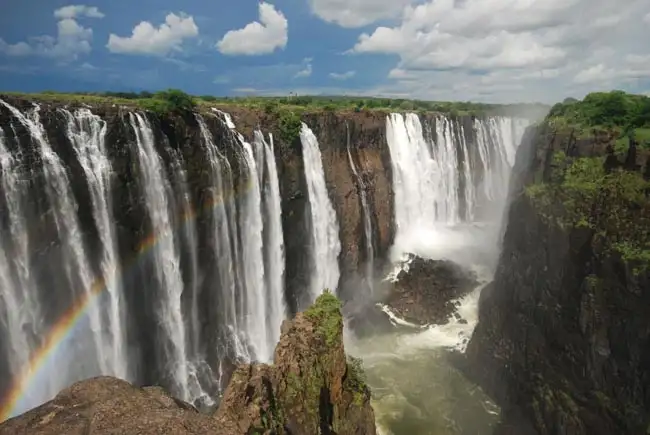
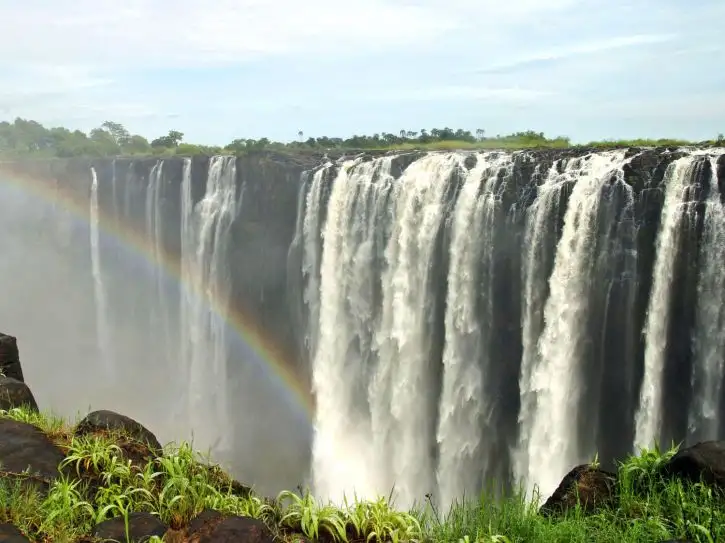
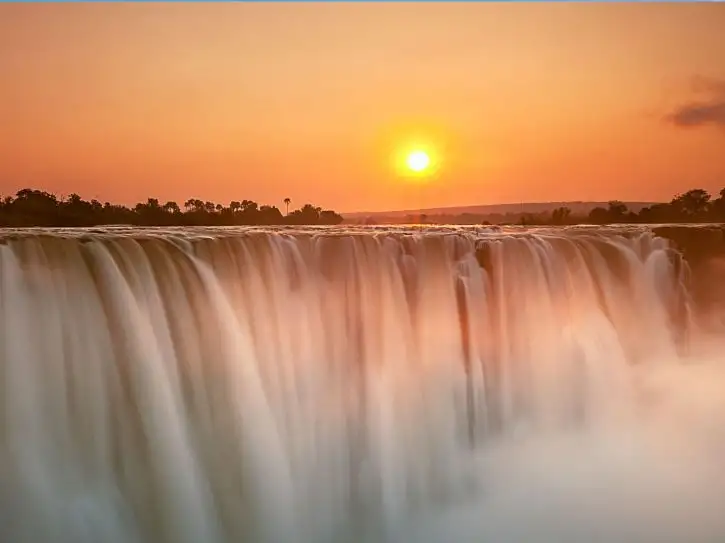
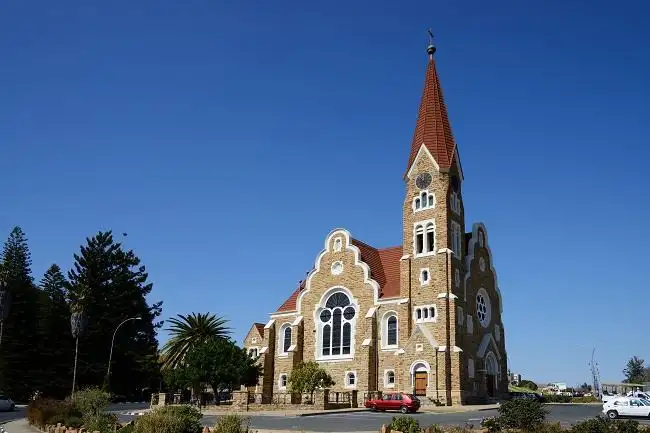
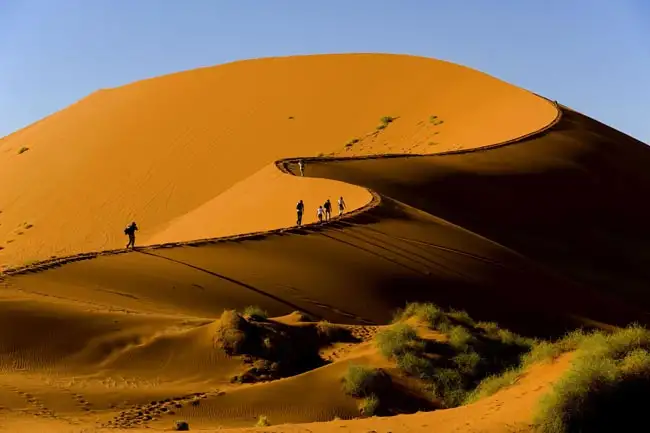
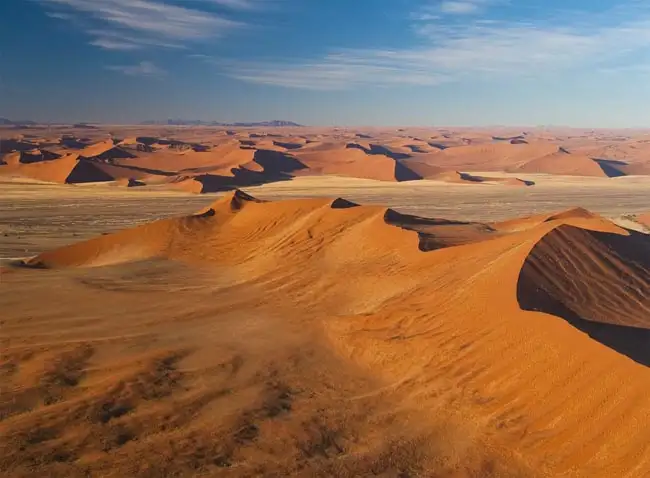
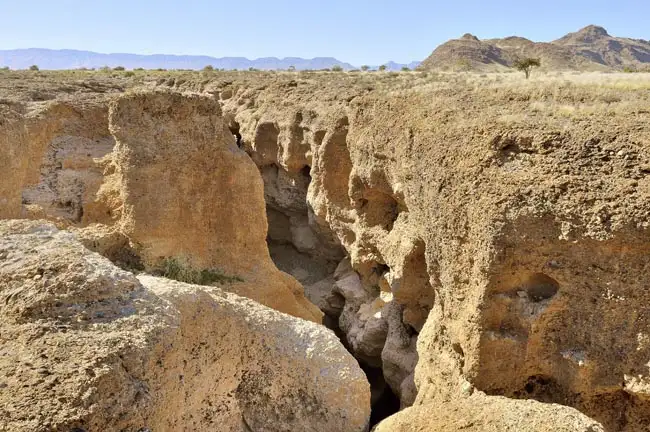
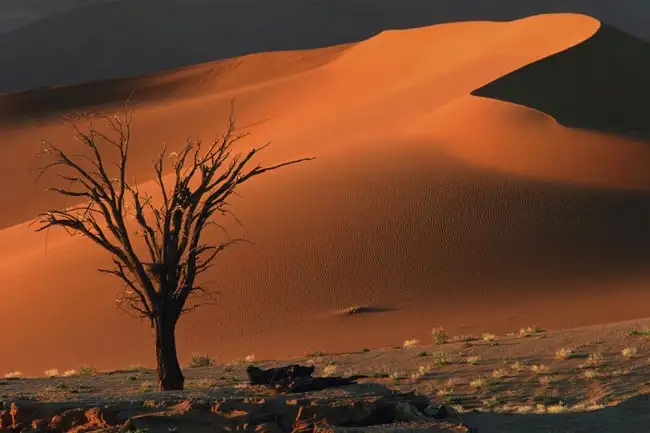
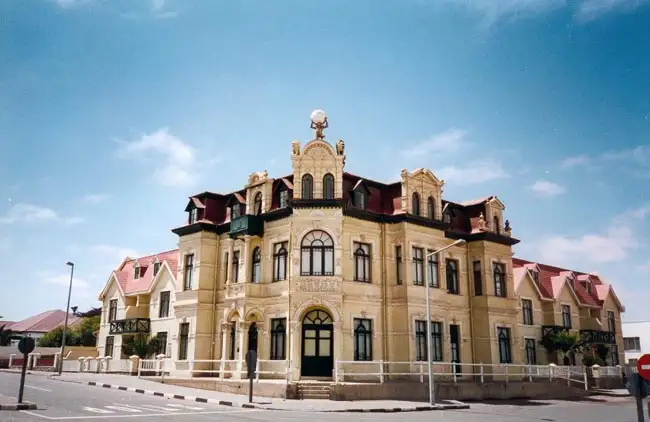
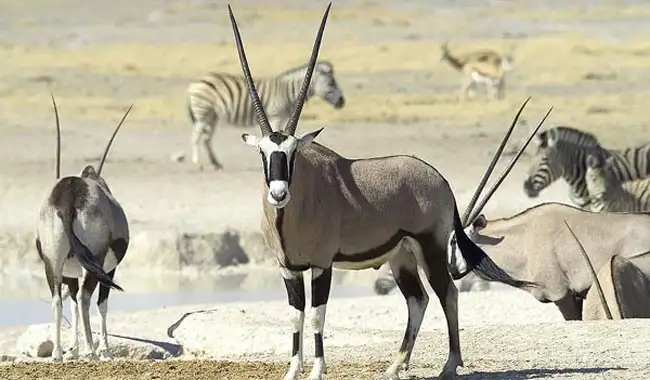
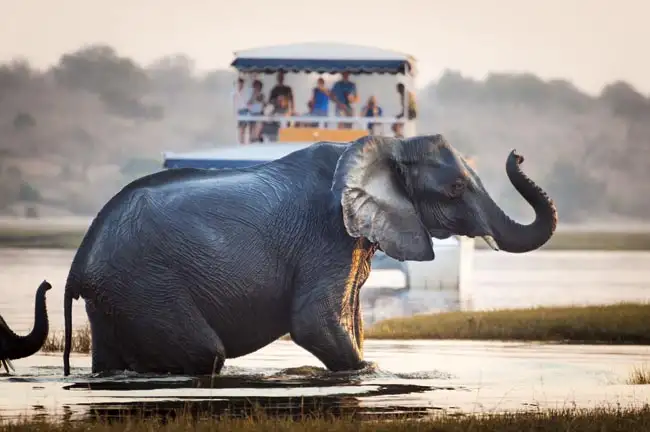
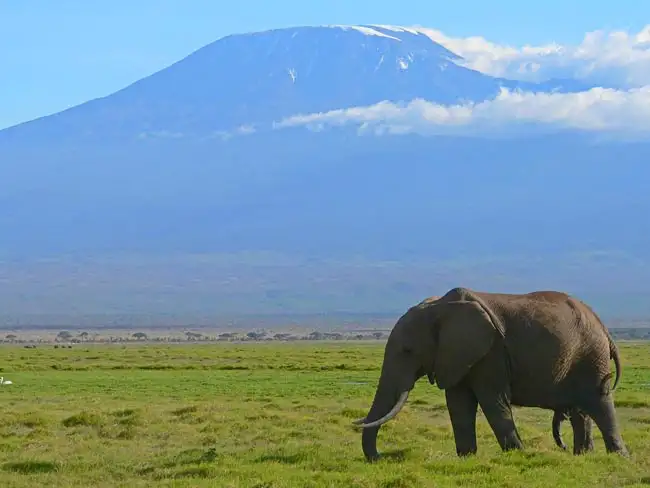
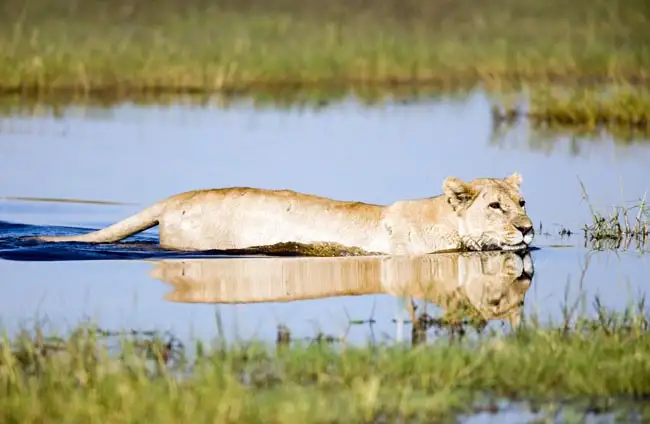
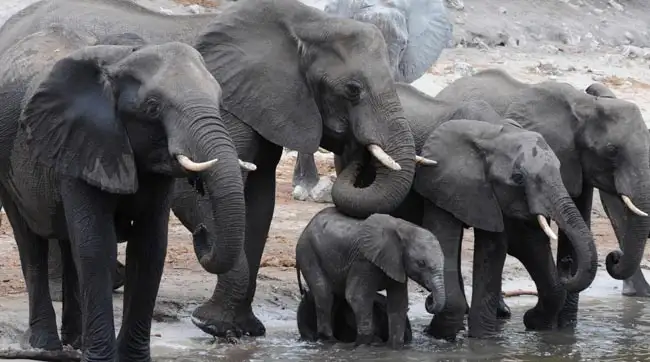
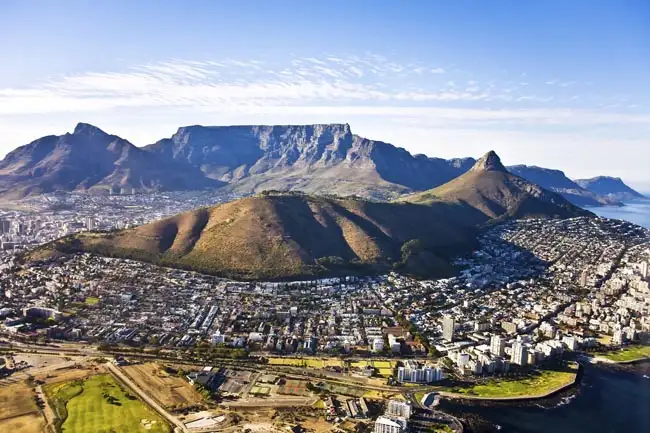
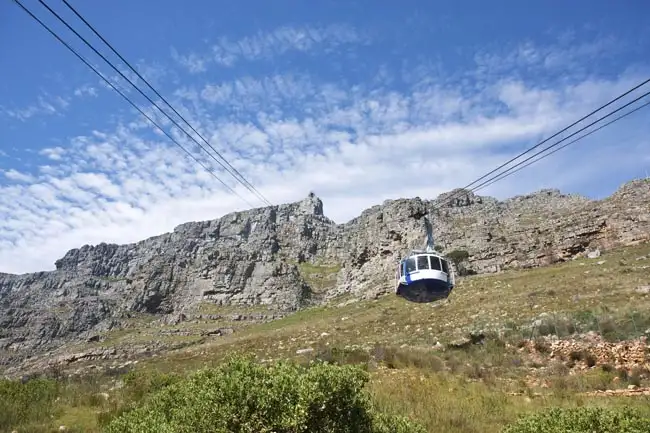
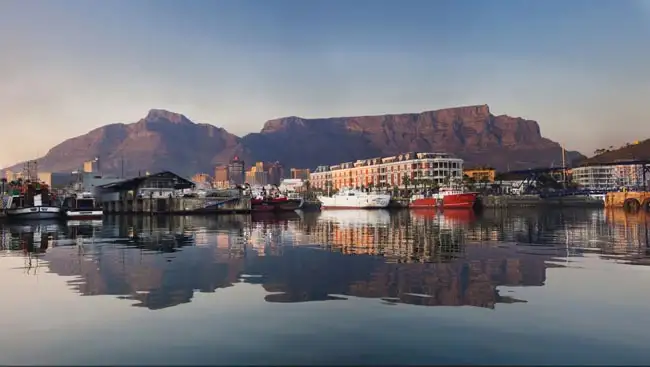
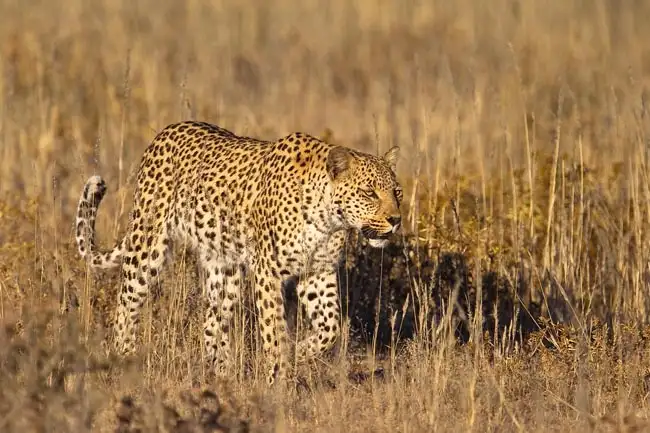
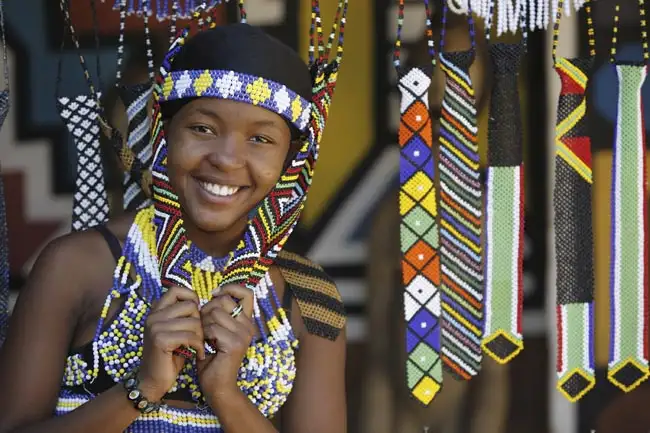
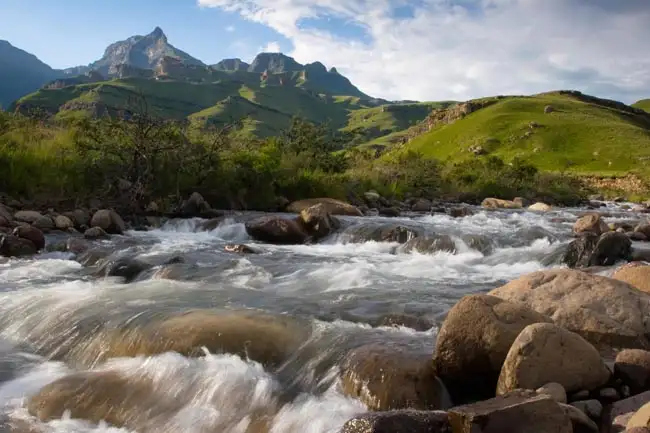
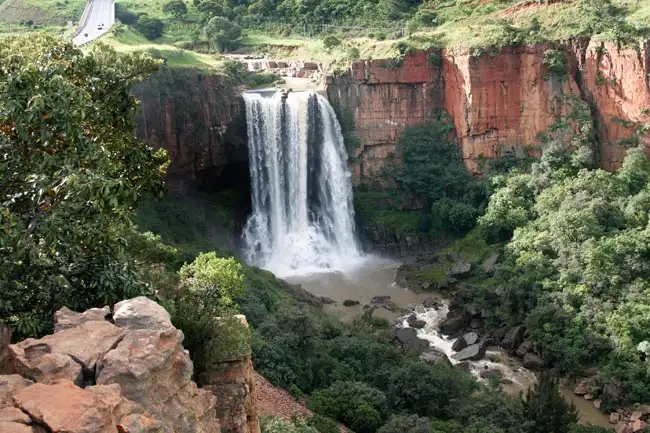
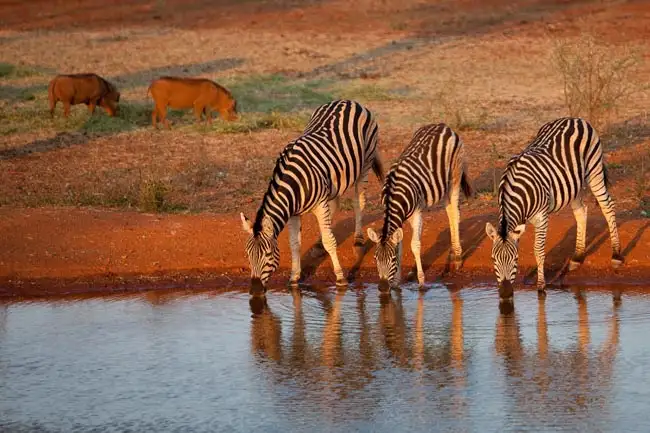
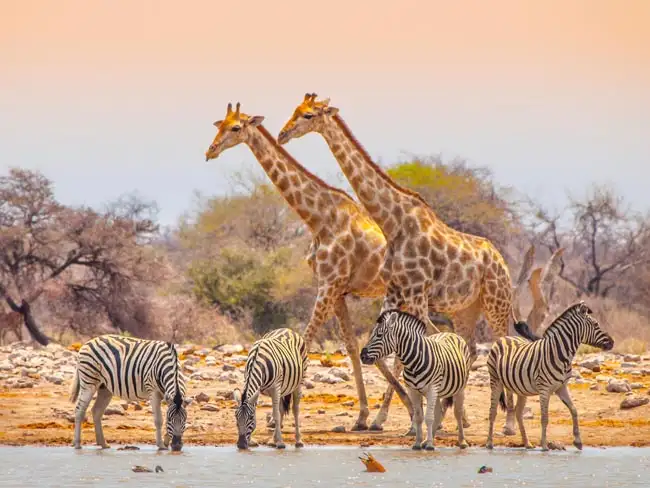
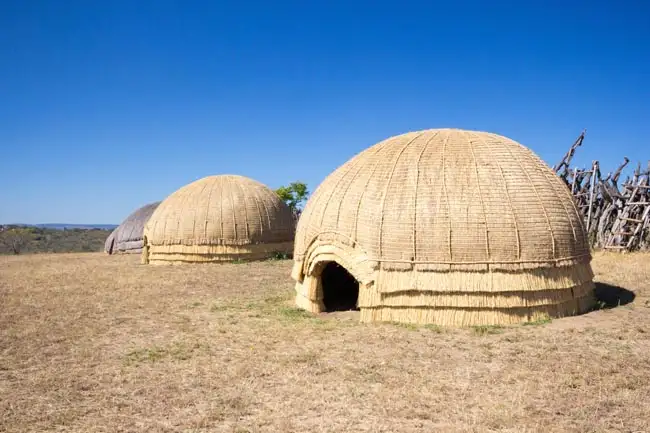
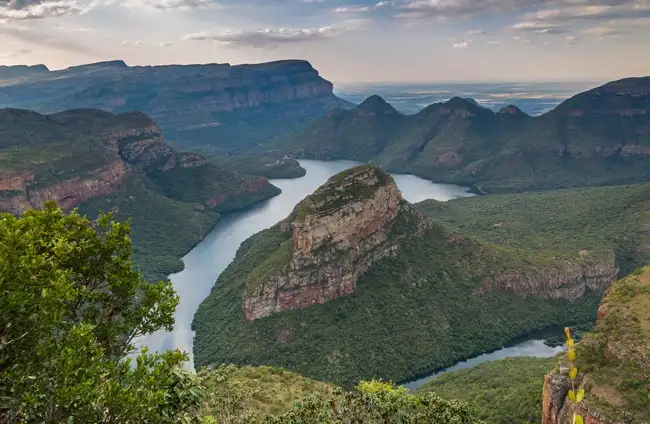
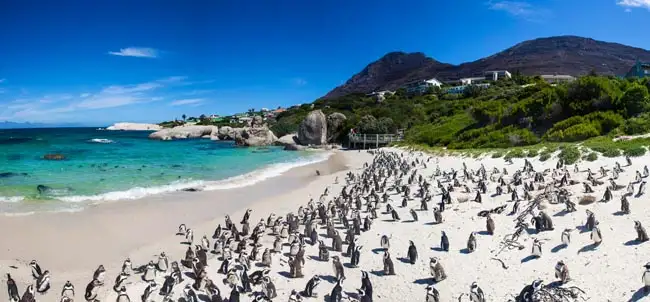
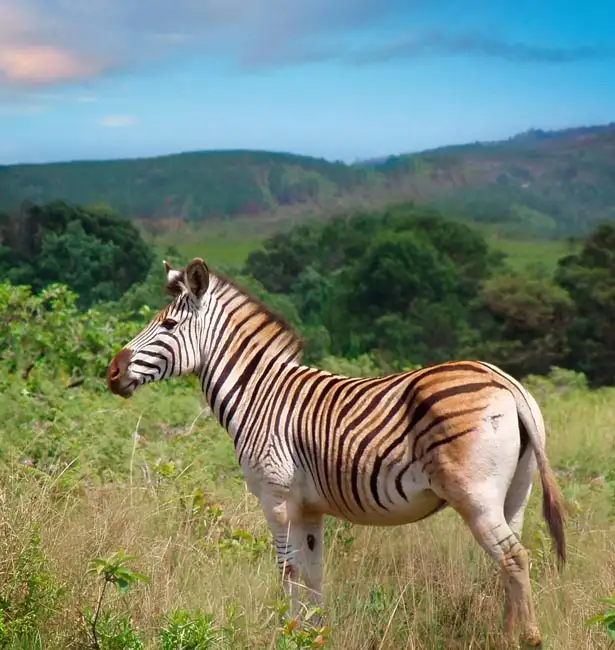
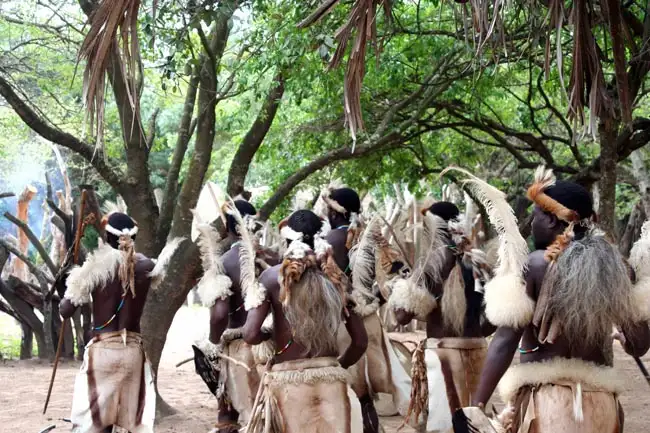
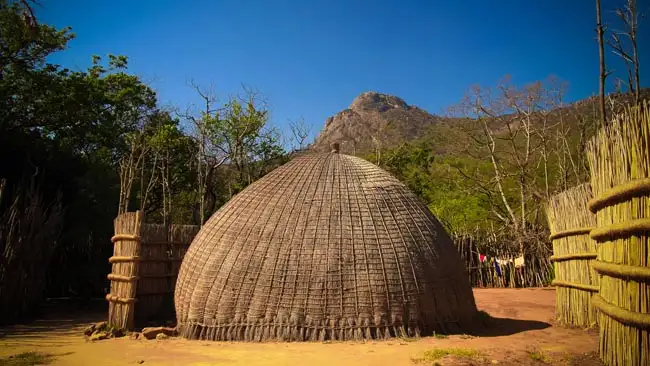
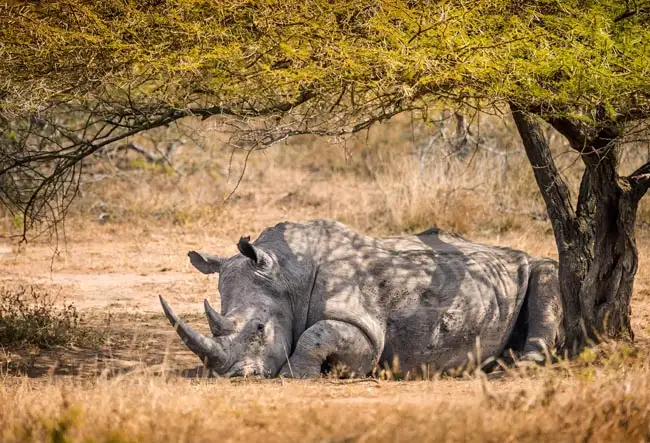
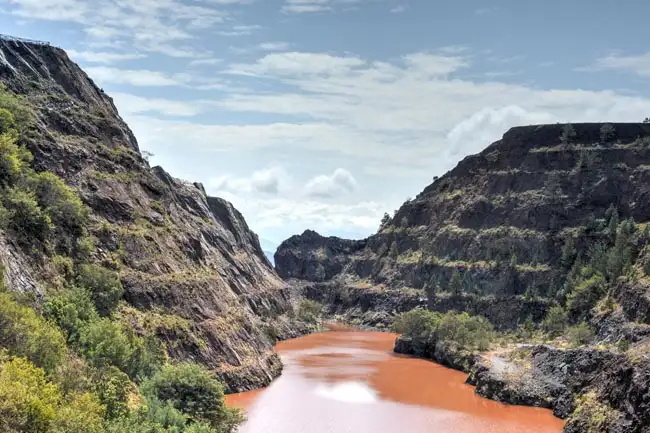
Excellent
Overall Rating
4.7
Extend Your Trip
This tour is part of a series that can be upgraded to make for a longer trip.
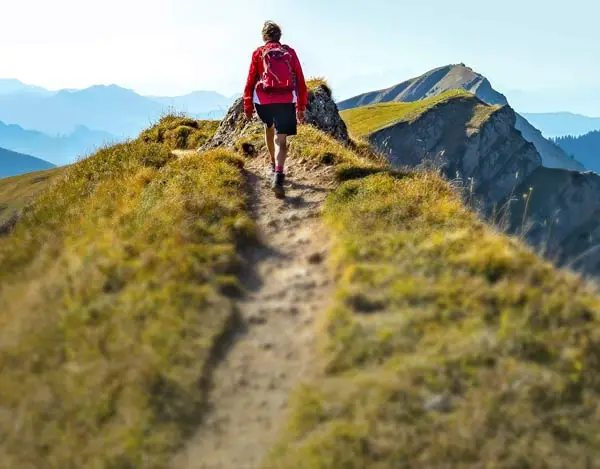
Fast and easy
Book this tour
Book your unforgettable adventure today! For any questions or advice, don't hesitate to contact us.
Have questions?
1-800-665-3998
- Final payment: Due 90 days prior to departure.
- Deposit: A non-refundable $1000 USD Deposit is required at booking, covering the 'Land Only' cost, including all internal flights (taxes listed separately)
- Internal Flight Taxes: An extra $191 USD applies for taxes and fees on tour flights. The internal airfares are included, but taxes are listed separately as they may change. Exceptions are noted in Red.
- Optional Single Supplement: $3920 USD (number of singles limited).
(View options forsingle travellers)
NOTE: A $1750 USD mandatory Single Supplement may apply if no pairing is available in the share program. - Transfering Tour or Date: Transferring to another tour or tour date is only permissible outside of 120 days prior to departure and is subject to a $100 USD change fee.
(Read our cancellation policy) - Once our tour becomes 'guaranteed,' we will require an additional non-refundable pre-payment of $1500 per person at which point your initial deposit and extra payment become 100% non-refundable/non-transferrable.
Choose your departure date:
Prices below are per person, twin-sharing costs in US Dollars (USD). Pricing does not include airfare to/from the tour and any applicable taxes.
Prices below are per person, twin-sharing costs in US Dollars (USD). Pricing does not include airfare to/from the tour and any applicable taxes.
Frequently Asked Questions
- What is the maximum number of participants on a trip?Most of our tours carry a maximum of 18 participants; some tours (ie hiking tours) top out at 16. In the event that we do not achieve our minimum complement by our 90-day deadline, we may offer group members the option of paying a "small-group surcharge" as an alternative to cancellation. If all group members agree, we will confirm the trip at existing numbers; this surcharge is refundable in the event that we ultimately achieve our regular minimum. If the small group surcharge is not accepted, we will offer a refund of your deposit or a different trip of your choice.
- Can I extend my tour either at the beginning or end? What about stopovers?Yes, you can extend your tour either at the beginning or the end and we can book accommodation in our tour hotel. Stopovers are often permitted, depending on air routing. Stopovers usually carry a "stopover" fee levied by the airline.
- How do I make a reservation? How and when do I pay?The easiest way to make a reservation is via our website; during office hours, you are also more than welcome to contact us by telephone.
A non-refundable deposit is payable at the time of booking; if a reservation is made within 90 days, full payment is required. Some trips require a larger deposit. If international airline bookings require a non-refundable payment in order to secure space or the lowest available fare, we will require an increase in deposit equal to the cost of the ticket(s).
Early enrolment is always encouraged as group size is limited and some trips require greater preparation time.
Once we have received your deposit, we will confirm your space and send you a confirmation package containing your trip itinerary, any visa/travel permit related documents, invoice, clothing and equipment recommendations, general information on your destination(s), and forms for you to complete, sign and return to us. Your air e-tickets (if applicable), final hotel list, final trip itinerary, and instructions on how to join your tour, will be sent approximately 2-3 weeks prior to departure. - What about cancellations, refunds, and transfers?Please review our cancellation policy page for details.
- I am a single who prefers my own room. What is a single supplement?All of our tours have a single supplement for those who want to be guaranteed their own room at each location.
This supplement is a reflection of the fact that most hotels around the world do not discount the regular twin-share rate for a room by 50% for only one person occupying a room. Most hotels will give a break on the price, but usually in the range of 25-30% of the twin-share rate. This difference, multiplied by each night, amounts to the single supplement.
The conventional amount can also vary from country to country and some destinations are more expensive than others for single occupancy. In order to be "single friendly," the supplements we apply are not a profit centre for us and we do our best to keep them as reasonable as possible.
On most tours we limit the number of singles available, not to be punitive, but rather because many hotels allow for only a limited number of singles; some smaller hotels at remote locations also have a limited number of single rooms available.
Please note that most single rooms around the world are smaller than twin-share rooms and will likely have only one bed. - Do you have a shared accommodation program?Yes! If you are single traveller and are willing to share, we will do our best to pair you with a same-gender roommate. On most of our tours, if we fail to pair you, we will absorb the single supplement fee and you will default to a single room at no extra charge. At some destinations, however, where single rooms are not significantly discounted, or not at all, we may apply a "mandatory" single in the event that we cannot find you a share partner. This is usually 50% of the usual supplement, but can be as much as 100%. If applicable, this proviso will be noted on each tour page on this website, on your invoice, and in our tour date/price book (available for download under "Resources").
